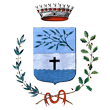La chiesa di San Bernardo è stata edificata nel XVI secolo nel centro di Collepiano, abitato a vocazione agricola collocato lungo la Valeriana, importante via di comunicazione che fin dal medioevo collegava Brescia alla Valle Camonica. Il fronte principale si apre su una piazzetta all’incrocio delle due strade principali, via Mazzini e via Castello, è scandito da elementi simmetrici, ovvero una doppia coppia di lesene con capitello a base quadrata poste su un basamento leggermente aggettante ed è sovrastato da un timpano triangolare. Il portale in pietra di Sarnico, preceduto da quattro gradini dello stesso materiale, è riccamente decorato con motivi vegetali che rimandano all’albero della vita, simbolo di passione, morte e resurrezione. Al di sopra, entro un profilo in stucco mistilineo, si trova un affresco oramai illeggibile di autore ignoto che raffigurava san Bernardo abate e, più su, una finestra rettangolare chiusa da una vetrata policroma con il ritratto di papa Paolo VI. All’interno l’unica navata è intervallata da lesene mentre la copertura a botte si innesta su una cornice fortemente aggettante. Sulla volta si possono ammirare dei medaglioni affrescati databili alla seconda metà del XVIII secolo con episodi della vita del santo titolare:Gloria di san Bernardo abate e angeli eSan Bernardo abate scaccia i demoni. Nel presbiterio, rialzato da due gradini in pietra di Botticino, è collocata la soasa, eseguita in stucco nel 1707 da Francesco Castellazzi. Ai lati di questa vi sono due statue lignee raffiguranti sant’Egidio, protettore dei lebbrosi, e sant’Isidoro, patrono dei contadini (secolo XIX). La pala d’ altare con la Madonna con Bambino e san Bernardo abate è opera di Ottavio Amigoni (1606-1661); il recente restauro ha permesso la lettura del dipinto come Lactatio Virginis: san Bernardo riceve alcune gocce di latte dalla Vergine che rende il suo modo di predicare soprannaturale. L’altare maggiore, realizzato in marmi policromi, mostra nella partitura centrale del paliotto un medaglione quadrilobato in marmo bianco con bassorilievo raffigurante San Bernardo che scaccia i diavoli. Questa straordinaria prova artistica, da collocarsi nella prima metà del Settecento, è attribuita alla bottega dei Callegari, noti scultori attivi in molti centri della provincia. Sulla volta vi è un affresco con Colomba dello Spirito Santo e Angeli con cartiglio (secolo XX). Le due piccole tele collocate sulla parete destra della navata sono attribuite al pittore maronese Pompeo Ghitti (1631-1703), allievo dell’Amigoni, e rappresentano Santa Lucia e Sant’Apollonia. L’altra pala, raffigurante Sant’Antonio di Padova che riceve il Bambino dalle mani della Vergine, è attribuita a Domenico Voltolini.
Saint Bernard’s church was built in the 16th century, in the centre of Collepiano, inhabited by farmers and located along the Via Valeriana, an important communication road which until the Middle Ages connected Brescia with Valle Camonica. The main front opens onto a small square at the crossing between the two main roads, Via Mazzini and Via Castello, and it’s surmounted by a triangular tympanum and it is scanned by symmetrical elements, which are two couples of pilasters with a square-based capital, placed on a slightly protruding base. The Sarnico stone portal, preceded by four steps in the same material, is richly decorated with vegetable motifs which reminiscent of the tree of life, a symbol of passion, death and resurrection. Above the portal, circumscribed by a mixtilinear stucco profile, is a fresco, which is now illegible and by an unknown author, which represented Saint Bernard Abbot and, further up, on a rectangular window closed in by polychrome glass, is the portrait of Pope Paul VI. Inside the church, the only nave is spaced out by lesenes, while the barrel vault is posing on a strongly protruding frame. On the vault, you may admire some fresco medallions which may be dated back to the second half of the 18th century, with Saint Bernard’s life’s episodes: Saint Bernard’s Glory and angels and Saint Bernard’s driving the demons away. In the presbytery, which is lifted by two Botticino stone steps, is the stucco soasa created by Francesco Castellazzi in 1707. At the sides, there are two wooden statues representing Saint Egidius, protector of the lepers, and Saint Isidore, patron of farmers (19th century). The altarpiece with the Madonna with Child and Saint Bernard Bishop is a work by Ottavio Amigoni (1606-1661); the recent restoration has enabled the reading of the painting as Lactatio Virginis: san Bernard receives some drops of the Virgin’s milk which make his preaching supernatural. The major altar, in polychrome marbles, shows in the central parting of the antependium, a white marble four-lobe medallion in with a bas relief representing Saint Bernard driving the demons away, this extraordinary artistic proof, which may be dated to the first half of the 16th century, was attributed to the Calegari, well-known sculptures who were active in many centres of the province. On the vault is a fresco with the Dove of the Holy Spirit and the Angels with the scroll (20th century). The two small canvases, placed on the right side wall of the nave, are attributed to the painter from Marone Pompeo Ghitti (1631-1703), a scholar of Amigoni, and they represent Saint Lucy and Saint Apollonia. The other altarpiece, representing Saint Anthony from Padua receiving the Child from the hands of the Virgin, is attributed to Domenico Voltolini.
